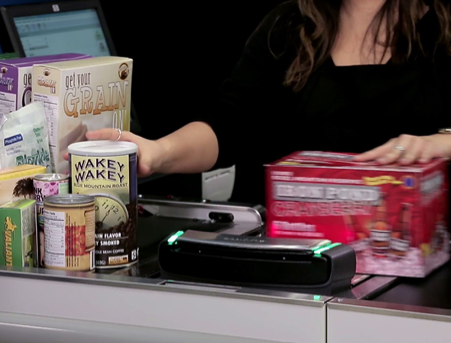 Top Retailers Could Save Billions in Labor Costs, Asserts White Paper
Top Retailers Could Save Billions in Labor Costs, Asserts White Paper
In the ultracompetitive world of retail, doing things the old-fashioned way is often the quickest route to becoming obsolete.
One retail trend with surprising staying power, however, has been the barcode. Retailers have long relied on this steadfast product identification technology to simplify inventory management and front-end checkout. But after more than four decades, the barcode as we know it may finally be showing its age, as newer breakthroughs look to enhance it and build off its legacy.
Challengers to the traditional barcode are tasked with an important mission: to quantify any significant cost savings that would justify their adoption. To that end, a new white paper is raising awareness of how the traditional barcode can be enhanced, while outlining the financial benefits of a recent innovation known as the Digimarc® Barcode.
The white paper was commissioned by Beaverton, Ore.-based Digimarc, the company behind this next-generation approach to product identity. Based on digital watermarking technology, data containing a product’s standard Global Trade Item Number (GTIN) is repeated across the item’s packaging graphics in a way that is imperceptible to the human eye, but detectable by POS scanners, smartphones, tablets and other devices enabled with Digimarc software. Printed on all sides of an item, often hundreds of times, these imperceptible barcodes effectively make all sides of a package scannable without affecting its graphic aesthetics.
According to the white paper’s “quantitative model,” high-volume retailers that augment traditional barcodes with these “high performance” barcodes can generate a substantial ROI, predicated on significant cashier labor cost savings.
Staggering Savings
Focusing on high-volume retailers such as supermarkets, big-box supercenters, warehouse centers, discounters and drug stores, the white paper estimates that the 120 highest-volume merchants in these categories could realize labor cost savings of over $500 million annually simply by improving checkout scanning rates by a single item per minute. However, since packaging enabled with this revolutionary technology is actually expected to speed up checkout rates by up to 33 percent, for a total of seven additional items per minute, the savings would likely be much greater—as much as $3 billion annually.
This new approach to consumer package identity enables such radical improvement in checkout time because cashiers don’t have to fumble around looking for a traditional barcode to scan. Since the each item’s unique GTIN data are printed repeatedly on all sides of a product’s packaging, point-of-sale systems can quickly detect them regardless of how the cashier orients the items in relation to the reader.
The white paper further asserts that retailers carrying private-label merchandise are especially poised to generate a strong ROI from implementing the Digimarc Barcode. According to the document, a hypothetical $10 billion retailer whose private label brands comprise 25 percent of total annual sales revenue could witness a five-year ROI of more than 275 percent by enabling private label products alone. Moreover, it would generate roughly a 1,200 percent ROI if all brands were enabled.
Crunching the Numbers
As a companion to the white paper, Digimarc also created an ROI Calculator, enabling retailers to even more accurately estimate the ROI that digitally watermarked packaging would produce inside their own unique business environment. Available in spreadsheet form, the calculator allows retailers to input their own variables, assumptions and data in order to arrive at a figure more in keeping with the realities of their in-store operations.
Although the white paper focuses solely on checkout speed, packaging enabled with the Digimarc Barcode possesses additional advantages over the conventional barcode. For instance, the streamlined scanning process minimizes checker wrist strain due to repetitive turning and twisting of packages in search of traditional barcodes. The technology also virtually eliminates barcode swapping, the practice of illegally replacing barcodes with ones that result in a lower price at checkout.
Digitally watermarked packaging also presents opportunities for mobile engagement with shoppers. Customers using their personal mobile devices can scan the product packaging and receive product information, promotional offers, product pairing suggestions and more.
There’s no question that the traditional barcode has left an indelible imprint on the retail industry. But from the striking results of this quantitative ROI analysis, it appears that retailers may finally be able to embrace something new—especially when it comes with a promise of game-changing labor cost savings.



Comments are closed.